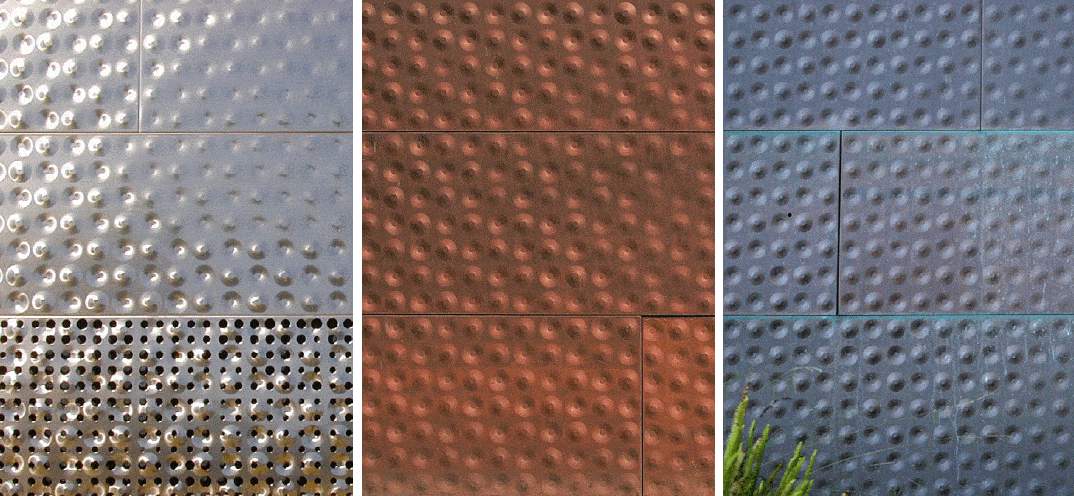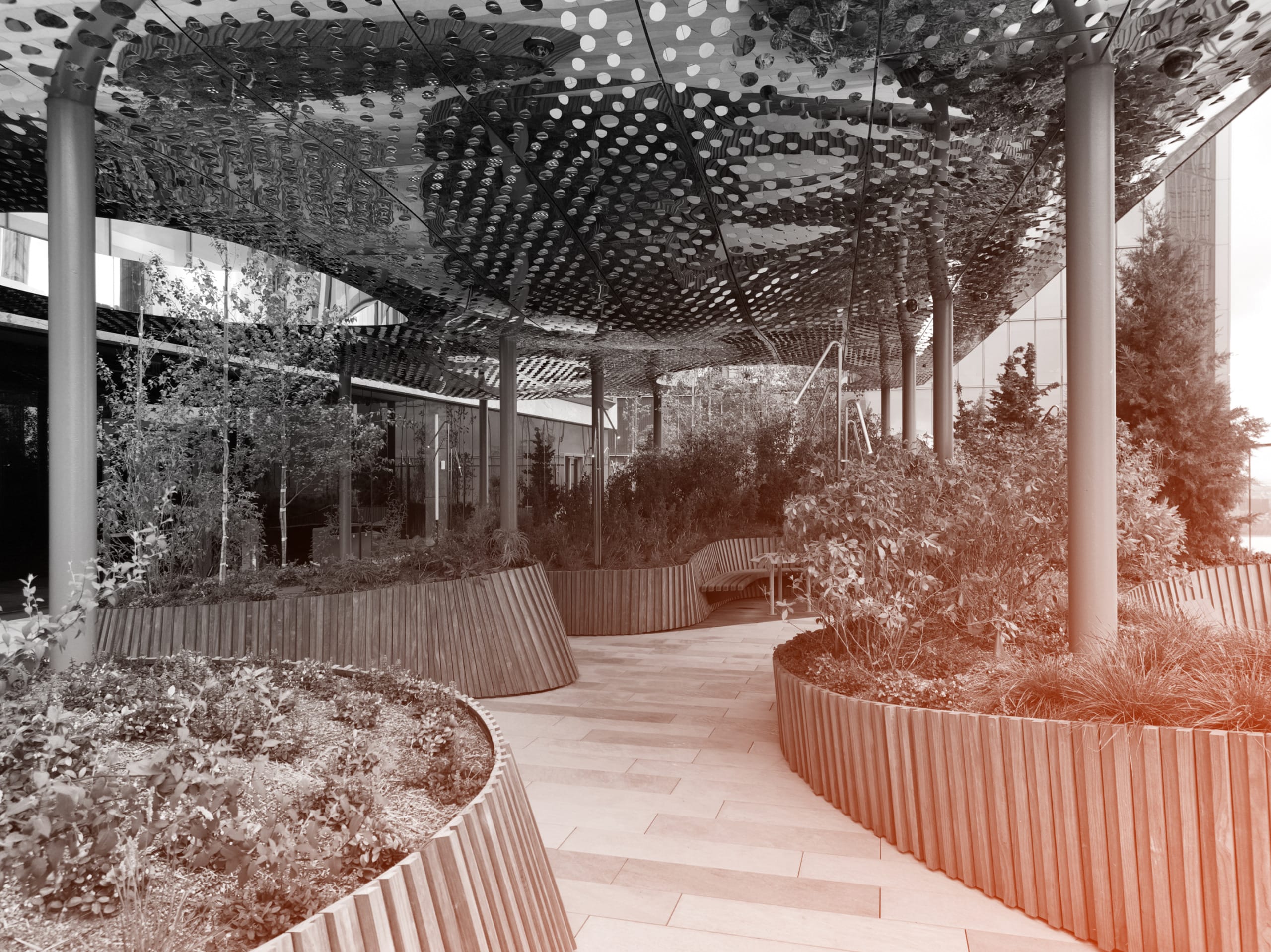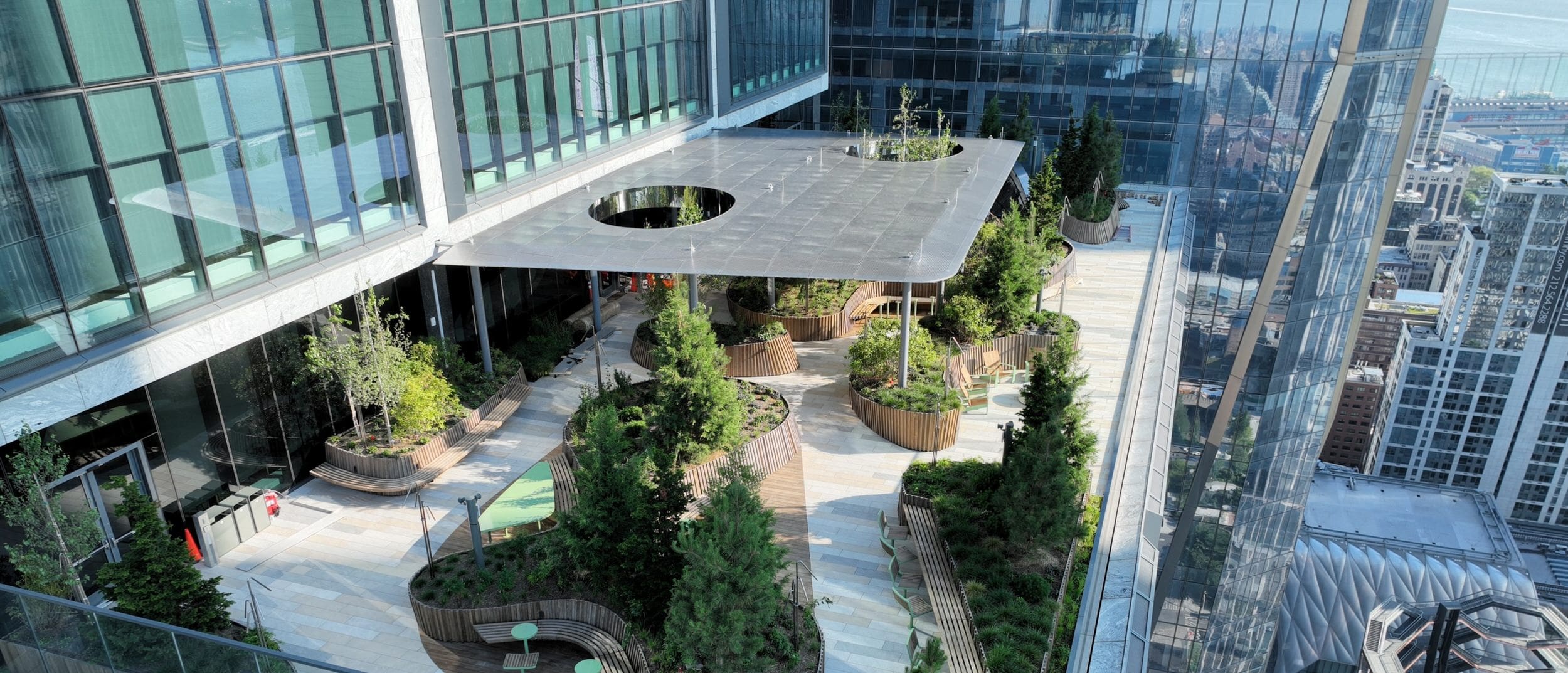Zahner’s Commitment to Sustainability
A Mindful Use of Materials
As architectural metal consultants, designers, engineers, and fabricators serving architects and contractors worldwide, Zahner is committed to climate change mitigation and healthy construction methods through sustainable and resilient design standards and manufacturing practices.
We study and adhere closely to the AIA Framework of Design Excellence that promotes better outcomes through responsible design and natural resource stewardship. While we don’t control every aspect of a building project, we do meet the highest standards of environmental protection specifically in the areas of metal sourcing, finishes, patinas, manufacturing, fabrication, packing, shipping, installation, and all other aspects within our area of expertise and influence. Below are the principles we focus on.
Design and Manufacturing for Resources and Water
When advising on metal selection, we balance priorities to achieve durable, safe, and healthy projects with an equitable, sustainable supply chain to minimize possible negative impacts to the planet. Clean water and environment standards are protected and observed through wastewater treatment and safe disposal. Our goal is always zero release.
To achieve this, Zahner strictly adheres to the following procedures in our
patination processes:
- Capture the effluent and rinse water during the patination process
- Remove the metals and solids from this effluent and rinse
- Recycle the water for reuse in the process
- Recycle the captured metal particulates
We have received numerous awards for our clean water processes by the Texas EPA. We welcome and fully cooperate with ongoing random checks of our wastewater at the Zahner Texas facility. We are proud of these achievements and are constantly researching ways to streamline our manufacturing processes.
Detail of the Eugene Federal Courthouse facade, featuring Zahner's Angel Hair Stainless Steel.
PHOTO © A. ZAHNER COMPANY.Design for Recyclability and Circularity
We look for continuous recovery and re-use of all materials, including metals, plastics and wood. Our manufacturing and fabrication facilities have robust recycling operations that capture off-fall, shavings, and other scrap from the processing of the metal. This scrap is sorted by metal type and alloy. We have recycled the metal we use for over 100 years; it is not so much a practice we adhere to, but a behavior and culture that is ingrained. We have extended this to packaging processes, using recycled cardboard where possible, reducing wood crating and reusing wooden skids.
We use our digital expertise to load trucks for shipping. Since our products are all created from digital files, we have created systems where we place the parts and large assemblies with virtual packaging on virtual trucks. We reduce the trucks needed and know precisely what is on each truck. This effectively reduces the carbon footprint by reducing truckloads. This also benefits our customers by keeping costs lower and making deliveries more efficient.
Design for Useful Life and Value
Metal surfaces and structures offer a resilience that withstands the confrontations posed by weather and human interactions. Metal roofs outlast all other roofing materials. Metal walls will outlast all other materials when correctly designed and protect the interior structural materials. For much of what we do, we use metals that form natural oxides on the surface as long-term resistance to the environment. There is nothing that compares to the durability or protection of a mineral surface formed on metals. These surfaces are integral and natural. They resist change and do not interfere with or add cost to the recycling process that eventually will happen.
The beauty of metals is they can be recycled indefinitely without loss of physical or mechanical behavior. No other material can make this claim. Today’s induction furnaces used to recycle metal generate the heat by means of electricity. As electricity becomes cleaner, the carbon footprint of metals will be further reduced.
PATINA TRANSITION OVER TIME ON THE DE YOUNG MUSEUM.
PHOTO © A. ZAHNER COMPANY.Design for Change and Resiliency
Resilience and reuse are essential to good metal design, and we contribute to that through responsible metal specification and manufacturing. Metals are robust, not fragile. Their resilience, strength to mass ratio, and flexibility make metals special among all materials. Metal is adaptable to remodeling, reconfiguration, repositioning, and reuse. Metals come in any number of forms, wire, rod, sheet, plate and casting. Metals can be shaped, hammered, stamped and machined to achieve an infinite variety of forms.
Perforated metal canopy casts shadows at Aguascalientes, Mexico.
Design for Well-Being
Good metal design supports health and well-being by considering physical, mental, and emotional effects of light, reflectivity, color, tone, texture and the stability of finishes and patinas.
Working closely with our design and construction partners, we embrace and encourage positive change by minimizing carbon emissions, promoting recyclability and resiliency, and contributing to a healthier built environment for all. We seek to increase the designer’s ability to work with materials without imposing detrimental effects on our environment.
L. William Zahner, CEO
A. Zahner Company








 PHOTO ©️ Parrish Ruiz de Velasco (parrch.com)
PHOTO ©️ Parrish Ruiz de Velasco (parrch.com)



 © Fedora Hat Photography
© Fedora Hat Photography Photo by Andre Sigur | ARKO
Photo by Andre Sigur | ARKO





 Ɱ, Creative Commons Attribution-Share Alike 4.0 International license, edited.
Ɱ, Creative Commons Attribution-Share Alike 4.0 International license, edited.